a&e features
Catching up with Michael Feinstein
Out crooner headlines Strathmore Gala this weekend
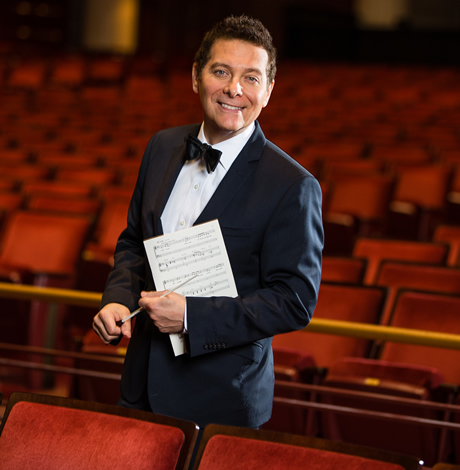
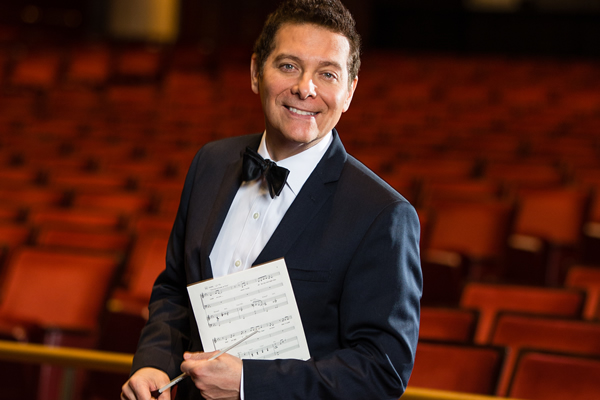
Michael Feinstein says the Strathmore is one of the country’s great music halls. He’ll be there this weekend. (Photo by Julia Duresky; courtesy Strathmore)
Strathmore Spring Gala
Saturday, May 12
Michael Feinstein in concert
Cocktails, 5 p.m.
Three-course dinner, 6:15Concert, 9 p.m.
Gala patron tickets: $1,250
Concert only: $45-130
Music Center at Stratmore
5301 Tuckerman Lane
North Bethesda, Md.
strathmore.org
Great American Songbook stalwart Michael Feinstein is at the Strathmore this weekend to headline its annual Spring Gala.
On Saturday night, the long-out crooner will sing along with Broadway singer Laura Osnes and several alums of the Strathmore’s artist-in-resident program.
The gala is a capstone event in the Strathmore’s year-long programming partnership with Feinstein in which they’ve collaborated to “spotlight torchbearers of Great American Song.” Feinstein spoke to the Blade by phone this week from his home in Indiana. His comments have been slightly edited for length.
WASHINGTON BLADE: How is 2018 treating you?
MICHAEL FEINSTEIN: Really great in some ways and in other ways, not so great. I broke my nose in January and I had a hemorrhage on my vocal cord but that’s all in the past and I’m feeling hale and hearty so I like to think I got through the most dramatic part and the rest should be smooth sailing.
BLADE: How did you break your nose?
FEINSTEIN: I walked into an impeccably polished plate of glass.
BLADE: Vocal cord stuff is really scary for a singer. Are you any worse for the wear?
FEINSTEIN: Evidently not. I did a symphony concert yesterday and two of my Lena Horne shows at Lincoln Center and everything seems to be full steam ahead so I’m very grateful and lucky I guess. All is good.
BLADE: What do you have planned for the Strathmore?
FEINSTEIN: It’s gonna be a fun night because, of course, it’s their gala and I love being associated with the Strathmore because it’s such a great venue to perform in. … The program will be with a 17-pice big band and the musical director is Tedd Firth who is one of the great jazz pianists and arrangers of our time. So it’ll be a celebration of American popular song including, of course, some Gershwin and then I’m gonna do a Sinatra medley that’s just a swinging, fun thing. Then Laura Osnes is a special guest. She’ll be doing some songs and we’ll be doing a duet together …. so it’ll be a fun, celebratory, rich musical experience I think.
BLADE: Why do you work to find young people to take up the cause of American standards? To your knowledge, does anything like that happen in other genres of music?
FEINSTEIN: Well, for a number of years I’ve been mindful of the fact that any art or music only stays alive if there are audiences for it and people who are educated in it and people who bring it to the attention of others and because we live in a time when there is so little arts education in schools, it’s up to all of us who care about it to do what we can to preserve it and bring it to the next generation. … The arts are incredibly transformative. They change our lives and it’s an essential part of what makes life livable.
BLADE: But why do some genres need this more than others? You think of Motown or any classic rock and nobody really has to work to keep it alive. Are you aware of similar efforts for polka or Dixieland or any other type of music more popular in yesteryear?
FEINSTEIN: Well certainly the American songbook needs it because the more people who learn about it, it becomes part of their lives and they’ll share it with others. A lot of contemporary artists do American songbook songs in their sets. It’s not like it exists in a vacuum. I remember when Lady Gaga sang “Someone to Watch Over Me” on a show. Many artists sing these songs and many thousands of artists have sang “Summertime.” So to me it’s always about making people more aware of it.
BLADE: You’ve done so many albums. Which was the hardest to sequence?
FEINSTEIN: It’s always challenging because you have a bunch of songs and then you have to think about which order makes the most sense. I like to think of it like telling a story like a play or a movie. It can be tough but I don’t remember one being especially more difficult than another. I’ve made many different types of albums and they all present their own challenges.
BLADE: Does sequencing sometimes affect arrangements and transitions?
FEINSTEIN: Absolutely. There are times I’ve changed the beginning of a track or cut part of it or extended it. Also the time between tracks is significant, but of course a lot of people don’t listen to music sequentially anymore, they pick and choose in whatever medium they use so … in some ways it’s a lost art.
BLADE: Do you keep in touch with Cheyenne Jackson? Have you seen any of his TV stuff? (Feinstein and Jackson released a duet album in 2014)
FEINSTEIN: Yes, I am in touch with Cheyenne. We performed together about, oh, four-five months ago and he wants to do more musical performances but his acting career keeps him well occupied. He’s a wonderful human being and Jason, his husband, as well. They’re a great couple and he’s a major talent. He’s one of the finest voices of our time. He’s got extraordinary range and versatility and, of course, charisma. He’s deeply gifted and just a nice person to be around.
BLADE: When we last spoke in 2015, you mentioned a multi-CD project you were working on but couldn’t say much about. What was that and is it still in the works?
FEINSTEIN: I was working on recording the complete songs of George Gershwin, which is like 800 published songs, and that’s what I was starting to embark on. … We decided against it for various reasons. … The more we explored it, the more we realized it was more interesting as an idea than it would have been in execution. But I’m doing a Gershwin country duets album now and it’s very exciting. Right now I’m working on a track with Dolly Parton and we’re going to be doing a track soon with Brad Paisley and that’ll be tremendous fun to put together.
BLADE: How often do the holy grails in your genre turn up? Is it fairly uncommon?
FEINSTEIN: Well things do turn up from time to time. (There are) Bing Crosby/George Gershwin demos from 1930 or 1931 that have never turned up but they might. I know of the existence of one Gershwin recording that I haven’t been able to get my hands on yet but I’m working on it. And sometimes things turn up that we didn’t even know existed, which is fun. I recently found some other Crosby recordings that were fun to discover from radio and a number of years ago, I discovered a bunch of lost Crosby tracks. Actually I’m a trustee of the Judy Garland estate and I just found about a dozen recordings of her from the 103-s that were part of her own record collection that were pretty extraordinary performances that, for the most part, have never been heard. So now the trust is figuring out the best way to release them. … But it’s always thrilling to find things like that.
BLADE: You’ve talked about rescuing scores from dumpsters. How did you happen to be in the right place at the right time?
FEINSTEIN: I have to ascribe it to karma or luck or fate, if you will. I had the experience a number of times of stumbling upon something right before it was slated for destruction even though my timing sometimes has been off. A couple years ago, I just missed gaining possession of an entire office full of music. When I went to collect it, I was told it been destroyed the day before. So my timing hasn’t always been perfect.
BLADE: Why was Hollywood so cavalier with its history years ago?
FEINSTEIN: Because the thing that mattered to Hollywood was the film itself, not the ancillary products such as scores or whatever was used to make the finished film. They didn’t understand the importance or value of the music so it was jettisoned. There are very few studios that kept their scores. Warner Brothers did for the most part. Fox kept a lot of them and Paramount did but the big destruction, of course, is MGM thanks to a man named James Aubrey who very specifically destroyed those assets and many others. They’re businesses, not museum or archives. They don’t exist to preserve, they exist to make money and if they don’t make money from something, they don’t consider it valuable, not understanding that there was not only financial value in these things but also cultural and historical value. … But that’s the way of the world.
BLADE: Is it possible to recreate a score from a recording? Is that even a thing?
FEINSTEIN: It does work but only if the person doing it has the expertise to accomplish it. There are people who’ve done it and done lousy jobs. Then there’s people like John Wilson in England who with a couple associates has impeccably restored scores that are exact. But the number of people on the planet who can do that is extremely limited. Probably no more, and I’m speaking generously, than five or six. … It’s possible but it’s very difficult.
BLADE: It has ebbed, but there was a period where many pop artists — Joni Mitchell, Cyndi Lauper, of course Rod Stewart — were releasing standards albums. Did you hear very many of them? Which was your favorite?
FEINSTEIN: I liked some of the arrangements on Joni Mitchell’s (“Both Sides Now,” 2000). I remember years ago, Annie Lennox did an album on which she recorded a Harry Warren song called “Keep Me Young and Beautiful” from 1932 (on 1992’s “Diva”). I actually think it’s more fun to discover an old standard in the midst of a pop album. Like I remember as a kid, I discovered this Steely Dan album “Pretzel Logic” and on it was a song called “East St. Louis Toodle-Oo,” an instrumental, which it wasn’t until years later that I discovered they did it on guitar and pop instruments but it was an exact copy of a 1928 Duke Ellington recording. So that’s always a kick.
BLADE: You met so many cool people of the 20th century. Did you ever by chance meet Kate Smith and how do you think her recordings of the standards have held up?
FEINSTEIN: Kate Smith is one of the great underestimated singers from today’s perspective. She was a dazzling talent. I did not meet her but she had a unique and formidable legacy because she was such a huge star on the radio going back to the 1930s and she had a tremendous recorded output that started in 1926 and ended 50 years later. She could sing just about anything and when she started making pop records in the ‘60s, mainly with Peter Matz, who was at the same time working with Barbra Streisand, some of them were great and some were mawkish because some of the more psychedelic songs didn’t translate well to her. But when she took some of the Broadway material, she was incomparable. Like her recording of “If He Walked Into my Life” from “Mame” is fantastic. Her recording of “What Kind of Fool Am I” from her live Carnegie Hall album is dazzling. If you watch on YouTube some of her TV appearances from the ‘70s, she sings a lot of these songs tremendously well. One of my favorites is “You and Me Against the World,” which is like a three-act play the way she sings it. It just tears your heart out.
BLADE: Why do some great figures from those years — Garland, Elvis, whomever — hold up, yet people like Kate Smith is a good example, who were equally well known at the time, you mention them to a millennial and you get a blank stare?
FEINSTEIN: Well, you know, Garland and Presley had volatile and tragic lives. A lot of people you mention Judy Garland, they say, “Oh, she was such a mess.” A lot of people who know the name, don’t necessarily know anything about her art.
BLADE: So you’re saying we have a macabre fascination with tragedy and somebody who had a nice, stable life, for whatever reason, that doesn’t capture the public imagination nearly so well?
FEINSTEIN: Sort of, yes.
BLADE: How do you like the acoustics at the Strathmore?
FEINSTEIN: Oh, it’s sensational. It really is one of the great performing venues. That’s something that really cannot be planned. Of course there’s a multi-million dollar industry of acoustic science but even with all that, there’s another unknowable factor. … I’ve been in brand new buildings that are supposed to be state of the art and they just don’t work. The Strathmore has the gratifying combination of being tremendously opulant and beautiful and comfortable and it creates a connection for the audience and the performer that’s unique and special. It’s a real jewel and a place to be treasured.
BLADE: What’s the gayest tchotchke or memento in your home?
FEINSTEIN: Oh golly. Well, there are so many, how do you choose? (laughs) I have a lot of Judy Garland mementos and I have things from Liza. Let me think. When Terrence and I got married (in 2008), which was in our home, Liza went into my office, which is in my house, and on one of the doors it has a name tag that says Mr. Feinstein that I probably took from a dressing room, so it’s on a closet door and it looks like an entrance to a room. She wrote on it “not anymore” and her name and the date. I said, “What’s that?” And she opened the door and said, “Don’t you get it? In the closet — not anymore,” because that was the date of our marriage. I guess that would be pretty gay.
a&e features
Peppermint thrives in the spotlight
In exclusive interview, she talks Netflix show — and the need to resist Trump’s attacks
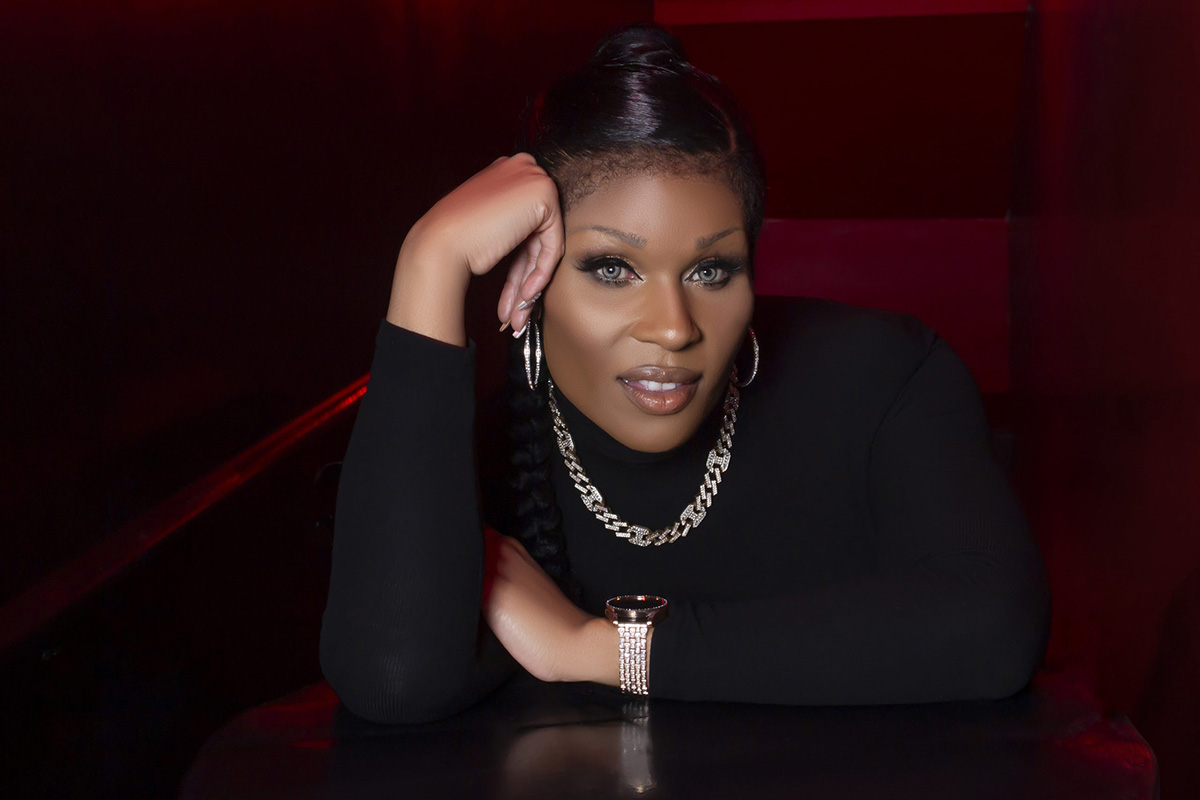
As an entertainer, there’s not much that Peppermint hasn’t done. She’s a singer, actor, songwriter, reality TV personality, drag queen, podcaster and the list goes on. Most importantly, as an activist she has been an invaluable role model for the trans, queer, and Black communities.
She’s a trailblazer who boasts an impressive list of ‘firsts.’ She is the first out trans contestant to be cast on “RuPaul’s Drag Race” (Season 9). She is the first trans woman to originate a principal musical role for Broadway’s “Head Over Heels.” She was also the first trans woman to compete in the runaway hit series “Traitors,” on Peacock, and she is the ACLU’s first-ever Artist Ambassador for Trans Justice. Her accolades are a true testament of the courage it took for Peppermint to live her authentic self.
We caught up with Peppermint to chat about her activism, taking on bigger roles on screen, our current political and social climate and life beyond the lens. For Peppermint, coming out as trans was not just a moment of strength—it was a necessity.
“It unfolded exactly as I had imagined it in terms of just feeling good and secure about who I am. I was in so much pain and sort of misery and anguish because I wasn’t able to live as free as I wanted to and that I knew that other people do when they just wake up. They get dressed, they walk out the door and they live their lives. Being able to live as your authentic self without fear of being persecuted by other people or by the government is essential to being healthy,” Peppermint tells the Blade in an exclusive interview.
“I was not able to imagine any other life. I remember saying to myself, ‘If I can’t imagine a life where I’m out and free and feeling secure and confident and left alone, then I don’t even want to imagine any kind of a life in the future,’” says Peppermint.
Recently, Peppermint returned for season 2 of Netflix’s comedy “Survival of the Thickest.” She added some spice and kick to the first season in her role as a drag bar owner. This time around, her character moves center stage, as her engagement and wedding become a major plot line in the show. Her expanded role and high-profile trans representation come at just the right time.
“It’s the largest acting role I’ve ever had in a television show, which my acting degree thanks me. It feels right on time, in a day where they’re rolling back trans rights and wanting to reduce DEI and make sure that we are limited from encouraging companies, corporations, industries, and institutions from not only featuring us, but supporting us, or even talking about us, or even referencing us.
“It feels great to have something that we can offer up as resistance. You can try to moralize, but it’s tougher to legislate art. So it feels like this is right on time and I’m just really grateful that they gave me a chance and that they gave my character a chance to tell a greater story.
Peppermint’s expanded role also accompanies a boom in queer representation in Black-powered media. Networks like BET and Starz and producers like Tyler Perry, are now regularly showcasing queer Black folks in main story lines. What does Peppermint think is fueling this increased inclusion?
“Queer folks are not new and queer Black folks are not new and Black folks know that. Every Black person knows at least one person who is queer. We are everywhere. We have not always been at the forefront in a lot of storytelling, that’s true, and that’s the part that’s new. It’s Hollywood taking us from the place where they usually have held us Black, queer folks in the makeup room, or as the prostitute, as an extra—not that there’s anything wrong with sex work or playing a background performer. I’ve played the best of the hookers! But those [roles] are very limiting.
“Hollywood has not historically done and still does not do a very good job of, including the voices of the stories that they make money [on]. And I think they’re realizing [the need] to be inclusive of our stories and our experiences, because for a long time it was just our stories without our actual experiences. It’s also exciting. It’s dramatic. It makes money. And they’re seeing that. So I think they’re just dipping their toes in. I think that they’re going to realize that balance means having us there in the room.”
Peppermint’s activism is tireless. She has raised more than six figures for prominent LGBTQ rights groups, she continues to speak around the nation, appears regularly on major media outlets addressing trans and LGBTQ issues and has been honored by GLAAD, World of Wonder, Out magazine, Variety, Condé Nast and more—all while appearing on screen and onstage in a long list of credits.
Now, under the Trump administration, she doesn’t have time to take a breath.
“I wouldn’t be able to do it if it weren’t second nature for me. Of course, there are ups and downs with being involved with any social issue or conversation and politics. But I am, for now, energized by it. It’s not like I’m energized by like, ‘Ooh, I just love this subject!’ right? It’s like, ‘Oh, we’re still being discriminated against, we gotta go and fight.’
“That’s just what it is. I get energy because I feel like we are quite literally fighting for our lives. I know that is hyperbole in some regards, but they are limiting access to things like housing, healthcare, job security and not having identification. Passport regulations are being put in a blender.”
Peppermint also mentions her thoughts on the unfair mandates to remove trans service members and revoke the rights and resources from the veterans who worked their whole lives to fight for this country.
“When you strip all these things away, it makes it really difficult for people to have a life and I know that that is what they’re doing. When I look around and see that that is what is at stake, I certainly feel like I’m fighting for my life. And that’s energizing.
“The only thing that would be the most rewarding besides waking up in a utopia and suddenly we’re all equal and we’re not discriminating against each other—which probably is not happening this year—is to be able to be involved in a project like this, where we can create that world. It’s also being built by people who are a part of that story in real life and care about it in real life.”
Peppermint is clear on her point that now is the time for all of the letters of the LGBTQ community to come together. Everyone who is trans and queer should be joining the fight against the issues that affect us all.
“Just trust us and understand that our experiences are tied together. That is how and why we are discriminated against in the way[s] that we are. The people who discriminate—just like how they can’t really distinguish between somebody who’s Dominican and somebody who’s African American — you’re Black when you’re getting pulled over. We are discriminated against in much the same way. It’s the same with being trans or queer or gender non-conforming or bi, we all have our own experiences and they should be honored.
“When laws are being created to harm us, we need to band together, because none of y’all asses is gonna be able to stop them from getting rid of marriage equality—which is next. If you roll the tape back to three years ago when somebody was trying to ask me about drag queen bans on readings in school, I was saying they’re coming for trans rights, which comes for bodily autonomy and abortion rights, which comes for gay marriage rights. Those three things will be wiped out.
Peppermint doesn’t take a pause to get fired up and call gay folk out in their obligation to return the favor to the Black trans community.
She shares with us her final thoughts.
“You cis-gender homosexuals need to stand the fuck up and understand that we are standing in front of you. It’s very difficult to understand this and know this, but so many of the rights that we have were hard fought and won by protest and by people fighting very hard for them. And many of those people in every single instance from the suffrage movement, obviously Civil Rights, queer rights, the AIDS and HIV movement—Black queer people have been there the entire time. Trans people have always been a part of that story, including Stonewall. Yes, we are using different terminology. Yes, we have different lenses to view things through, but let me tell you, if you allow us to be sacrificed before you see us go off the side, you will realize that your foot is shackled to our left foot. So, you better stand the fuck up!”
Peppermint for president!
a&e features
Tristan Schukraft on keeping queer spaces thriving
New owner of LA’s Abbey expands holdings to Fire Island, Mexico
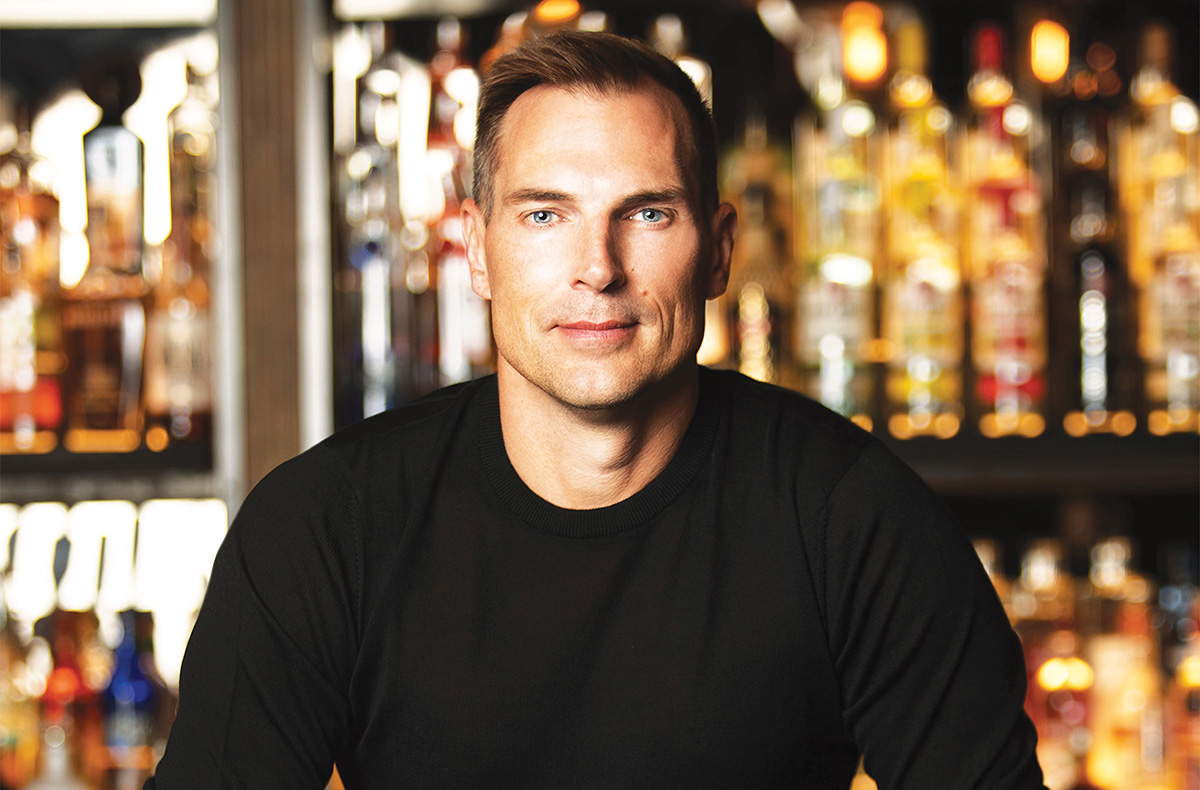
LOS ANGELES — Like the chatter about Willy Wonka and his Chocolate Factory, the West Hollywood community here started to whisper about the man who was going to be taking over the world-famous Abbey, a landmark in Los Angeles’s queer nightlife scene. Rumors were put to rest when it was announced that entrepreneur Tristan Schukraft would be taking over the legacy created by Abbey founder David Cooley. All eyes are on him.
For those of us who were there for the re-opening of The Abbey, when the torch was officially passed, all qualms about the new regime went away as it was clear the club was in good hands and that the spirit behind the Abbey would forge on. Cher, Ricky Martin, Bianca del Rio, Jean Smart, and many other celebrities rubbed shoulders with veteran patrons, and the evening was magical and a throwback to the nightclub atmosphere pre-COVID.
The much-talked-about purchase of the Abbey was just the beginning for Schukraft. It was also announced that this business impresario was set to purchase the commercial district of Fire Island, as well as projects launching in Mexico and Puerto Rico. What was he up to? Tristan sat down with the Blade to chat about it all.
“We’re at a time right now when the last generation of LGBT entrepreneurs and founders are all in their 60s and they’re retiring. And if somebody doesn’t come in and buy these places, we’re going to lose our queer spaces.”
Tristan wasn’t looking for more projects, but he recounts what happened in Puerto Rico. The Atlantic Beach Hotel was the gay destination spot and the place to party on Sundays, facing the gay beach. A new owner came in and made it a straight hotel, effectively taking away a place of fellowship and history for the queer community. Thankfully, the property is gay again, now branded as the Tryst and part of Schukraft’s portfolio with locations in Puerto Vallarta and Fire Island.
“If that happens with the Abbey and West Hollywood, it’s like Bloomingdale’s in a mall. It’s kind of like a domino effect. So that’s really what it is all about for me at this point. It has become a passion project, and I think now more than ever, it’s really important.”
Tristan is fortifying spaces for the queer community at a time when the current administration is trying to silence the LGBTQ+ community. The timing is not lost on him.
“I thought my mission was important before, and in the last couple of months, it’s become even more important. I don’t know why there’s this effort to erase us from public life, but we’ve always been here. We’re going to continue to be here, and it brings even more energy and motivation for me to make sure the spaces that I have now and even additional venues are protected going in the future.”
The gay community is not always welcoming to fresh faces and new ideas. Schukraft’s takeover of the Abbey and Fire Island has not come without criticism. Who is this man, and how dare he create a monopoly? As Schukraft knows, there will always be mean girls ready to talk. In his eyes, if someone can come in and preserve and advance spaces for the queer community, why would we oppose that?
“I think the community should be really appreciative. We, as a community, now, more than ever, should stand together in solidarity and not pick each other apart.”
As far as the Abbey is concerned, Schukraft is excited about the changes to come. Being a perfectionist, he wants everything to be aligned, clean, and streamlined. There will be changes made to the DJ and dance booth, making way for a long list of celebrity pop-ups and performances. But his promise to the community is that it will continue to be the place to be, a place for the community to come together, for at least another 33 years.
“We’re going to build on the Abbey’s rich heritage as not only a place to go at night and party but a place to go in the afternoon and have lunch. That’s what David Cooley did that no others did before, is he brought the gay bar outside, and I love that.”
Even with talk of a possible decline in West Hollywood’s nightlife, Schukraft maintains that though the industry may have its challenges, especially since COVID, the Abbey and nightlife will continue to thrive and grow.
“I’m really encouraged by all the new ownership in [nightlife] because we need another generation to continue on. I’d be more concerned if everybody was still in their sixties and not letting go.”
In his opinion, apps like Grindr have not killed nightlife.
“Sometimes you like to order out, and sometimes you like to go out, and sometimes you like to order in, right? There’s nothing that really replaces that real human interaction, and more importantly, as we know, a lot of times our family is our friends, they’re our adopted family.
Sometimes you meet them online, but you really meet them going out to bars and meeting like-minded people. At the Abbey, every now and then, there’s that person who’s kind of building up that courage to go inside and has no wingman, doesn’t have any gay friends. So it’s really important that these spaces are fun, to eat, drink, and party. But they’re really important for the next generation to find their true identity and their new family.”
There has also been criticism that West Hollywood has become elitist and not accessible to everyone in the community. Schukraft believes otherwise. West Hollywood is a varied part of queer nightlife as a whole.
“West Hollywood used to be the only gay neighborhood, and now you’ve got Silver Lake and you’ve got parts of Downtown, which is really good because L.A., is a huge place. It’s nice to have different neighborhoods, and each offers its own flavor and personality.”
Staunch in his belief in his many projects, he is not afraid to talk about hot topics in the community, especially as they pertain to the Abbey. As anyone who goes to the Abbey on a busy night can attest to, the crowd is very diverse and inclusive. Some in the community have started to complain that gay bars are no longer for the gay community, but are succumbing to our straight visitors.
Schukraft explains: “We’re a victim of our own success. I think it’s great that we don’t need to hide in the dark shadows or in a hole-in-the-wall gay bar. I’m happy about the acceptance. I started Tryst Hotels, which is the first gay hotel. We’re not hetero-friendly, we’re not gay-friendly. We’re a gay hotel and everyone is welcome. I think as long as we don’t change our behavior or the environment in general at the Abbey, and if you want to party with us, the more than merrier.”
Schukraft’s message to the community?
“These are kind of dangerous times, right? The rights that we fought for are being taken away and are being challenged. We’re trying to be erased from public life. There could be mean girls, but we, as a community, need to stick together and unite, and make sure those protections and our identity aren’t erased. And even though you’re having a drink at a gay bar, and it seems insignificant, you’re supporting gay businesses and places for the next generation.”
a&e features
Creator Max Mutchnick on inspirations for ‘Mid-Century Modern’
Real-life friendships and loss inform plot of new Hulu show
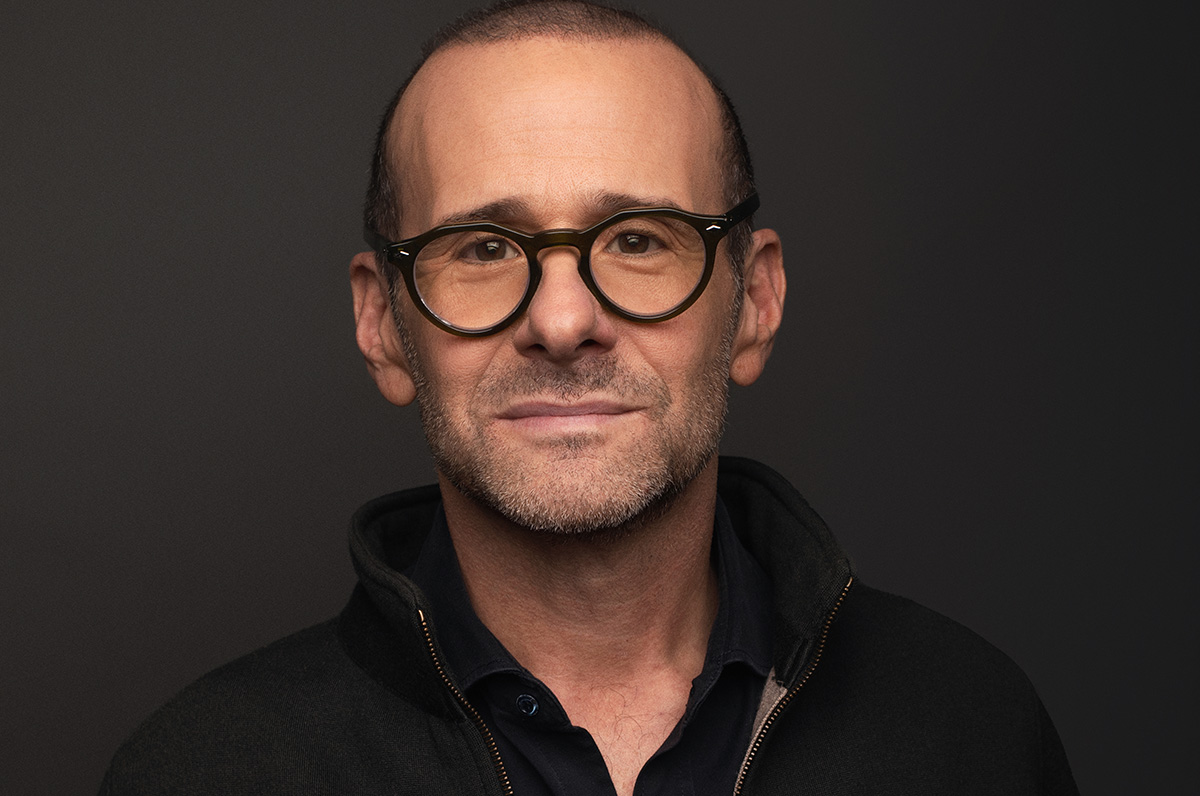
It’s been a long time – maybe 25 years when “Will & Grace” debuted – since there’s been so much excitement about a new, queer sitcom premiering. “Mid-Century Modern,” which debuted on Hulu last week, is the creation of Max Mutchnick and David Kohan, the gay men who were also behind “Will & Grace.”
Set in Palm Springs, Calif., following the death of the one of their closest friends, three gay men gather to mourn. Swept up in the emotions of the moment, Bunny (Nathan Lane) suggests that Atlanta-based flight attendant Jerry (Matt Bomer) and New York-based fashion editor Arthur (Nathan Lee Graham) move into the mid-century modern home he shares with his mother Sybil (the late Linda Lavin). Over the course of the first season’s 10 episodes, hilarity ensues. That is, except for the episode in which they address Sybil’s passing. The three male leads are all fabulous, and the ensemble cast, including Pamela Adlon as Bunny’s sister Mindy, and the stellar line-up of guest stars, such as Jesse Tyler Ferguson, Vanessa Bayer, Richard Kind, and Cheri Oteri, keep humor buzzing. Shortly before the premiere of “Mid-Century Modern,” Mutchnick made time for an interview with the Blade.
BLADE: I’d like to begin by saying it’s always a delight to speak to a fellow Emerson College alum. In ways would you say that Emerson impacted your professional and creative life?
MAX MUTCHNICK: I think Emerson was the first place that reflected back to me that my voice, my thoughts were good, and they were worth listening to. I developed a confidence at Emerson that did not exist in my body and soul. It was a collection of a lot of things that took place in Boston, but I mean we can just put it all under the Emerson umbrella.
BLADE: Before “Will & Grace,” you co-created the NBC sitcom “Boston Common,” which starred fellow Emerson alum Anthony Clark. Is it important for you to maintain those kinds of alumni relationships?
MUTCHNICK: Because Emersonians are such scrappy little monkeys and they end up being everywhere in the world, you can’t help but work with someone from Emerson at some point in your career. I’m certainly more inclined to engage with someone from Emerson once I learn that they went to my alma mater. For me, it has much more to do with history and loyalty. I don’t think of myself as one of those guys that says, “Loyalty means a lot to me. I’m someone that really leans into history.” It’s just what my life and career turned out to be. The longer I worked with people and the more often I worked with them, the safer that I felt, which means that I was more creative and that’s the name of the game. I’ve got to be as comfortable as possible so I can be as creative as possible. If that means that a person from Emerson is in the room, so be it. (Costume designer) Lori Eskowitz would be the Emerson version. And then (writer and actor) Dan Bucatinsky would be another version. When I’m around them for a long time, that’s when the best stuff comes.
BLADE: Relationships are important. On that subject, your new Hulu sitcom “Mid-Century Modern” is about the longstanding friendship among three friends, Bunny (Nathan Lane), Jerry (Matt Bomer), and Arthur (Nathan Lee Graham). Do you have a friendship like the one shared by these three men?
MUTCHNICK: I’m absolutely engaged in a real version of what we’re projecting on the show. I have that in my life. I cannot say that I’m Jerry in any way, but the one thing that we do have in common is that in my group, I’m the young one. But I think that that’s very common in these families that we create. There’s usually a young one. Our culture is built on learning from our elders. I didn’t have a father growing up, so maybe that made me that much more inclined to seek out older, wiser, funnier, meaner friends. I mean the reason why you’re looking at a mouthful of straight, white teeth is because one of those old bitches sat across from me about 25 years ago at a diner and said, “Girl, your teeth are a disaster, and you need to get that fixed immediately.” What did I know? I was just a kid from Chicago with two nickels in my pocket. But I found three nickels and I went and had new teeth put in my head. But that came from one of my dearest in the group.
BLADE: Do you think that calling “Mid-Century Modern” a gay “Golden Girls” is a fair description?
MUTCHNICK: No. I think the gay “Golden Girls” was really just used as a tool to pitch the show quickly. We have an expression in town, which is “give me the elevator pitch,” because nobody has an attention span. The fastest way you can tell someone what David (Kohan) and I wanted to write, was to say, “It’s gay Golden Girls.” When you say that to somebody, then they say, “OK, sit down now, tell me more.” We did that and then we started to dive into the show and realized pretty quickly that it’s not the gay “Golden Girls.” No disrespect to the “Golden Girls.” It’s a masterpiece.
BLADE: “Mid-Century Modern” is set in Palm Springs. I’m based in Fort Lauderdale, a few blocks south of Wilton Manors, and I was wondering if that gay enclave was ever in consideration for the setting, or was it always going to be in Palm Springs?
MUTCHNICK: You just asked a really incredible question! Because, during COVID, Matt Bomer and I used to walk, because we live close by. We had a little walking group of a few gay gentlemen. On one of those walks, Matt proposed a comedy set in Wilton Manors. He said it would be great to title the show “Wilton Manors.” I will tell you that in the building blocks of what got us to “Mid-Century Modern,” Wilton Manors, and that suggestion from Matt Bomer on our COVID walks, was part of it.
BLADE: Is Sybil, played by the late Linda Lavin, modeled after a mother you know?
MUTCHNICK: Rhea Kohan (mother of David and Jenji). When we met with Linda for the first time over Zoom, when she was abroad, David and I explained to her that this was all based on Rhea Kohan. In fact, some of the lines that she (Sybil) speaks in the pilot are the words that Jenji Kohan spoke about her mother in her eulogy at the funeral because it really summed up what the character was all about. Yes, it’s very much based on someone.
BLADE: The Donny Osmond jokes in the second episode of “Mid-Century Modern” reminded me of the Barry Manilow “fanilows” on “Will & Grace.” Do you know if Donny is aware that he’s featured in the show?
MUTCHNICK: I don’t. To tell you the truth, the “fanilow” episode was written when I was not on the show. I was on a forced hiatus, thanks to Jeff Zucker. That was a show that I was not part of. We don’t really work that way. The Donny Osmond thing came more from Matt’s character being a Mormon, and also one of the writers. It’s very important to mention that the writing room at “Mid-Century Modern,” is (made up of) wonderful and diverse and colorful incredible humans – one of them is an old, white, Irish guy named Don Roos who’s brilliant…
BLADE: …he’s Dan Bucatinsky’s husband.
MUTCHNICK: Right! Dan is also part of the writing room. But I believe it was Don who had a thing for Donny, and that’s where it comes from. I don’t know if Donny has any awareness. The only thing I care about when we turn in an episode like that is I just want to hear from legal that we’re approved.
BLADE: “Mid-Century Modern” also includes opportunities for the singers in the cast. Linda Lavin sang the Jerome Kern/Ira Gershwin tune “Long Ago (And Far Away)” and Nathan Lane and the guys sang “He Had It Coming” from “Chicago.” Was it important to give them the chance to exercise those muscles?
MUTCHNICK: I don’t think it was. I think it really is just the managers’ choice. David Kohan and I like that kind of stuff, so we write that kind of stuff. But by no means was there an edict to write that. We know what our cast is capable of, and we will absolutely exploit that if we’re lucky enough to have a second season. I have a funky relationship with the song “Long Ago (And Far Away).” It doesn’t float my boat, but everybody else loved it. We run a meritocracy, and the best idea will out. That’s how that song ended up being in the show. I far prefer the recording of Linda singing “I’ll Be Seeing You” over her montage in episode eight, “Here’s To You, Mrs. Schneiderman.” We were just lucky that Linda had recorded that. That recording was something that she had done and sent to somebody during COVID because she was held up in her apartment. That’s what motivated her to make that video and send it. That’s how we were able to use that audio.
BLADE: Being on a streaming service like Hulu allows for characters to say things they might not get away with on network TV, including a foreskin joke, as well as Sybil’s propensity for cursing.
MUTCHNICK: And the third line in the show is about him looking like a “reluctant bottom.” I don’t think that’s something you’re going to see on ABC anytime soon. David and I liked the opportunity to open up the language of this show because it might possibly open the door to bringing people…I’m going to mix metaphors…into the tent that have never been there before. A generation that writes off a sitcom because that language and that type of comedy isn’t the way that they sound. One of the gifts of doing this show on Hulu is that we get to write dialogue that sounds a little bit more like you and I sound. As always, we don’t want to do anything just to do it.
BLADE: It didn’t feel that way.
MUTCHNICK: It’s there when it’s right. [Laughs] I want to have a shirt made with Linda’s line, as her mother always used to say, “Time is a cunt.”
BLADE: “Mid-Century Modern” also utilizes a lot of Jewish humor. How important is it for you to include that at this time when there is a measurable rise in anti-Semitism?
MUTCHNICK: I think it’s important, but I don’t think it’s the reason why we did it. We tried very hard to not write from a place of teaching or preaching. We really are just writing about the stuff that makes us laugh. One of the things that makes something better and something that you can invest in is if it’s more specific. We’re creating a character whose name is Bunny Schneiderman and his mother’s name is Sybil and they made their money in a family-run business, it gets Jewy, and we’re not going to shy away from it. But we’re definitely not going to address what’s going on in the world. That doesn’t mean I don’t find it very upsetting, but I’m writing always from the point of view of entertaining the largest number of people that I can every week.
BLADE: “Mid-Century Modern” has a fantastic roster of guest stars including Jesse Tyler Ferguson, Vanessa Bayer, Billie Lourd, Cheri Oteri, Richard Kind, Rhea Perlman, and Judd Hirsch. Are there plans to continue that in future seasons?
MUTCHNICK: Yes. As I keep saying, if we’re so lucky that we get to continue, I don’t want to do “The Love Boat.” Those are fine comic actors, so I don’t think it feels like that. But if we get to keep going, what I want to do is broaden the world because that gives us more to write about. I want to start to introduce characters that are auxiliary to the individuals. I want to start to meet Arthur’s family, so we can return to people. I want to introduce other neighbors, and different types of gay men because we come in so many different flavors. I think that we should do that only because I’m sure it’s what your life is and it’s what my life is. I’ve got a lot of different types. So, yes, we will be doing more.
BLADE: Finally, Linda Lavin passed away in December 2024, and in a later episode, the subject of her character Sybil’s passing is handled sensitively, including the humorous parts.
MUTCHNICK: We knew we had a tall order. We suffered an incredible loss in the middle of making this comedy. One of the reasons why I think this show works is because we are surrounded by a lot of really talented people. Jim Burrows and Ryan Murphy, to name two. Ryan played a very big role in telling us that it was important that we address this, that we address it immediately. That we show the world and the show goes on. That wasn’t my instinct because I was so inside the grief of losing a friend, because she really was. It wasn’t like one of those showbizzy-type relationships. And this is who she was, by the way, to everybody at the show. It was the way that we decided to go. Let’s write this now. Let’s not put this at the end of the season. Let’s not satellite her in. Let’s not “Darren Stevens” the character, which is something we would never do. The other thing that Jim Burrows made very clear to us was the import of the comedy. You have to write something that starts exactly in the place that these shows start. A set comedy piece that takes place in the kitchen. Because for David and me, as writers, we said we just want to tell the truth. That’s what we want to do with this episode and that’s the way that this will probably go best for us. The way that we’ve dealt with grief in our lives is with humor. That is the way that we framed writing this episode. We wanted it to be a chapter from our lives, and how we experience this loss and how we recover and move on.
-
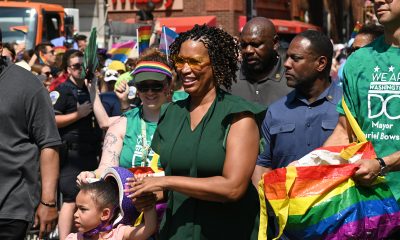
 District of Columbia4 days ago
District of Columbia4 days agoFinal push to raise funds, fill D.C. hotels as WorldPride nears
-

 El Salvador3 days ago
El Salvador3 days agoGay Venezuelan makeup artist remains in El Salvador mega prison
-

 District of Columbia4 days ago
District of Columbia4 days agoReenactment of 1965 gay rights protest at White House set for April 17
-
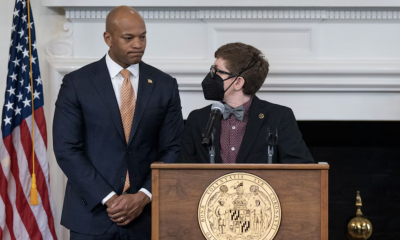
 Maryland4 days ago
Maryland4 days agoFreeState Justice: Transgender activist ‘hijacked’ Moore’s Transgender Day of Visibility event












